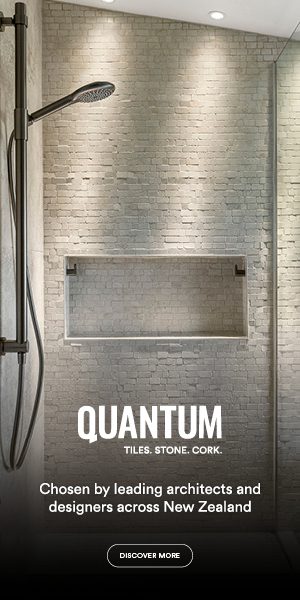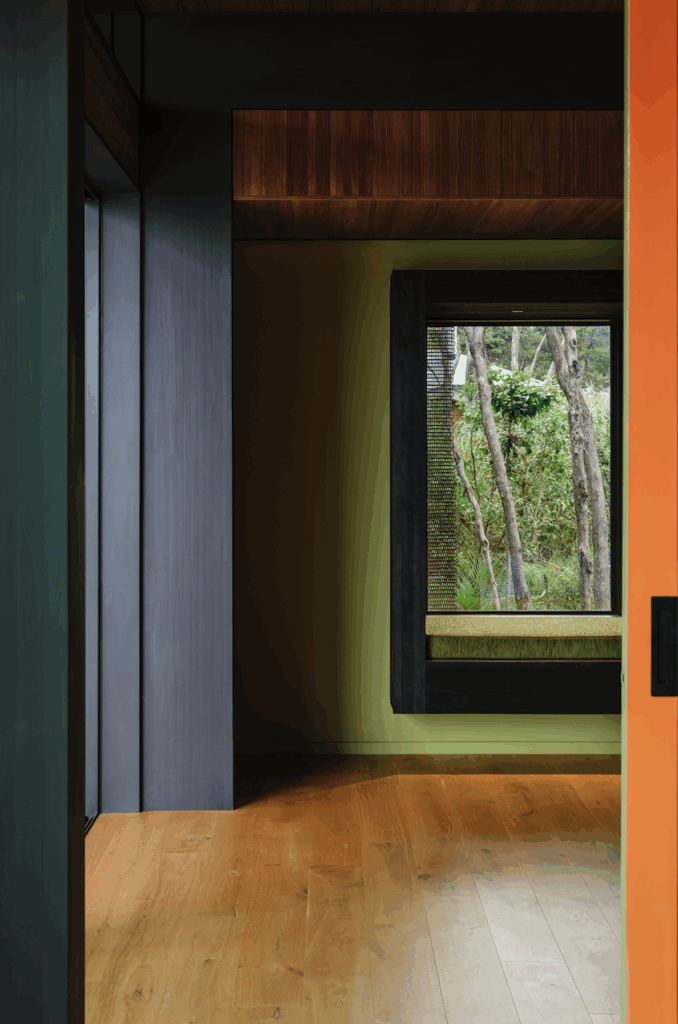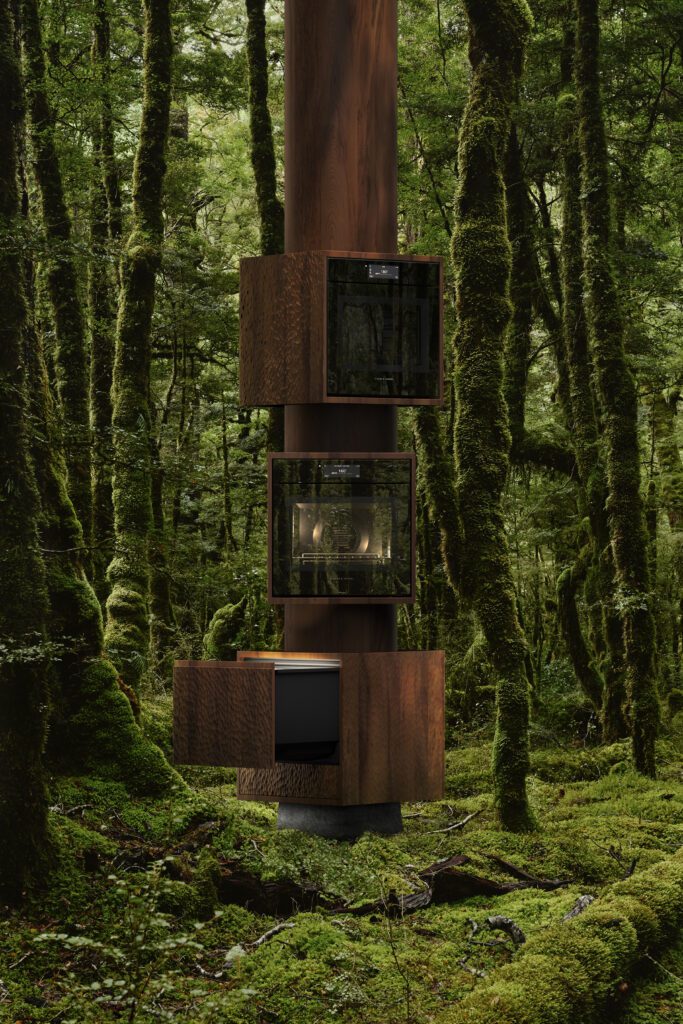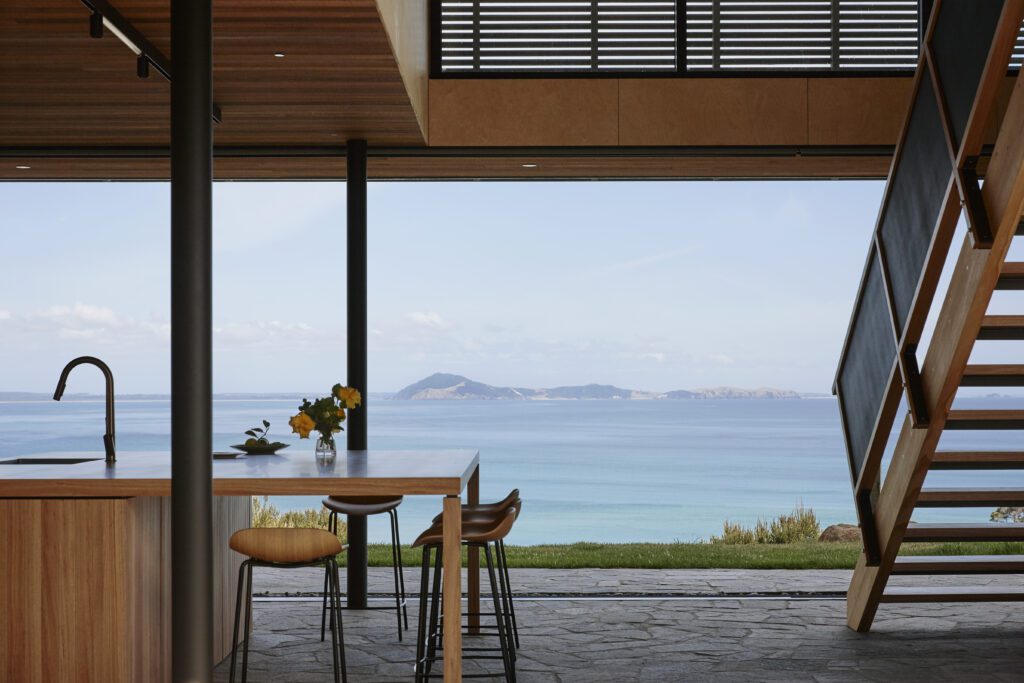This compact bach by Fearon Hay was designed as a prototype for a flexible design that can be put down in a number of locations
Architects Jeff Fearon and Tim Hay have designed a simple, compact bach concept “flexible enough,” Jeff says, “to put down in a number of spots” – not a moveable building, but a plan that was a little less site-specific than the bespoke landscape occupation of some of their other designs.
Their first opportunity to do this came on a piece of land at Oruawharo Bay on Great Barrier Island owned by Tim’s parents, Peter and Jan Hay. In 2002, Tim and Jeff had designed a house in the bay that the Hay family have holidayed in ever since (the house featured on the cover of our December/January 2004 issue).
More recently, however, with Tim and his brother Jeremy having families of their own, the Hays realised they were going to need a little more space if the holidays on the island they had always enjoyed were going to continue with enough accommodation for everyone. “We’d been talking about it for four or five years,” Tim says. “Eventually Dad said we better get on with it.”
Tim and Jeff worked on the project in close collaboration with Tim’s sister, interior architect Penny Hay. The trio didn’t want to replicate the approach they had taken at the main house, a modernist pavilion-style home made of concrete, glass and steel. “The idea was that it wasn’t to be an annex of the main building,” Tim explains. “The main house is in quite a dominant position in the bay and we didn’t want to overwhelm that with another building. We wanted the colour palette of this one to be recessive, with the black exterior working in with the manuka and kanuka on the hill behind.”
The new house, dubbed Oruawharo Cottage (like the main house, it is available for short-term rentals), has two bedrooms and 100 square metres of floor space, a scale that lends the interior a sense of intimacy and containment.
“We all enjoyed the challenges of balancing the restrictions of the floor area with clever design,” Tim says. “If you laid the spaces out as simple boxes it wouldn’t work, so you develop strategies to counter the restrictions of the square metreage.” These strategies include the way the bedrooms feature frameless, sliding barn-style doors that allow lateral views through the spaces when open, for example.
Similarly, the two bathrooms are tucked carefully behind more sliding panels in each of the bedrooms. And the kitchen is a simple stainless steel unit with edges that contribute to a feeling of “order and containment”, Tim says. Adds Jeff: “A building of this scale means you can be focused and passionate about every corner and junction.”
[quote title=”A building of this scale” green=”true” text=”means you can be focused and passionate about every corner and junction” marks=”true”]
The cottage’s floor and walls are lined in oiled oak boards, a warm, light counterpoint to the black, band-sawn cedar exterior. “You’re in this wild, isolated, amazing environment, so we wanted the interior space to feel nurturing,”
The 2.6-metre high glass sliders that line the front of the house create an elegant horizontal frame for the view. “Presenting a coastal landscape through a horizontal frame is something we really enjoy doing,” Jeff says. “It’s a relaxed proportion that emphasises the horizon and the receding layers of hills.”
[quote title=”Presenting a coastal landscape through a horizontal frame” green=”true” text=”is something we really enjoy doing” marks=”true”]
The apparent simplicity of the building disguises its almost infinite adaptability. Perforated black metal screens line the northern elevation, an ethereal layer that moderates sun and ventilation, allows for a greater sense of security when the house is locked up, and provides a near-perfect atmosphere for an afternoon nap. “You can be in your bedroom with the screens closed to create a sleepy sort of layer that moderates the intensity of the light without blocking the views,” Tim says. Behind the cottage’s sliding glass doors, almost 100 metres of heavy charcoal wool felt curtains on elongated tracks provide night-time cosiness in a storm and modulate the acoustics of the spaces. Like all Great Barrier Island homes, the cottage is off the grid, powered by six solar panels, and with its own water catchment and on-site sewage treatment.
The success of the cottage can so far be measured in the jostling among the Hays for which branch of the family gets to stay in it this Christmas. Oruawharo Cottage looks like a very successful test run.
Oruawharo Cottage
Oruawharo Cottage is available to rent from $450 per night
holidayhouses.co.nz/properties/23894.asp
Words by: Jeremy Hansen. Photo by: Patrick Reynolds.




